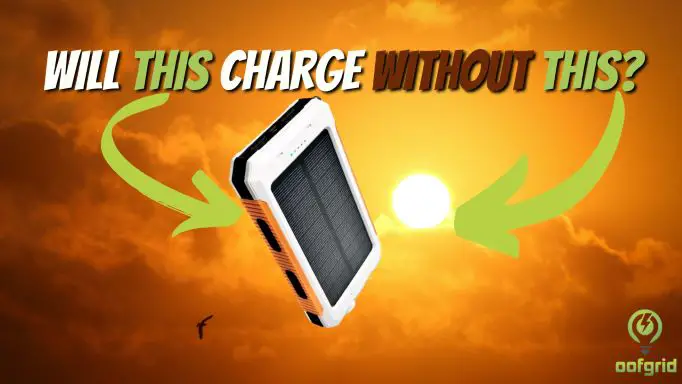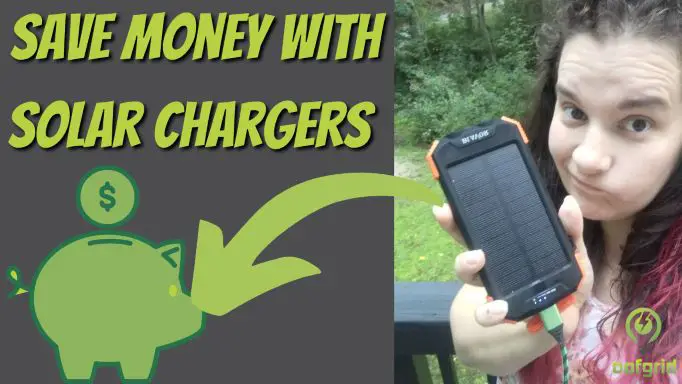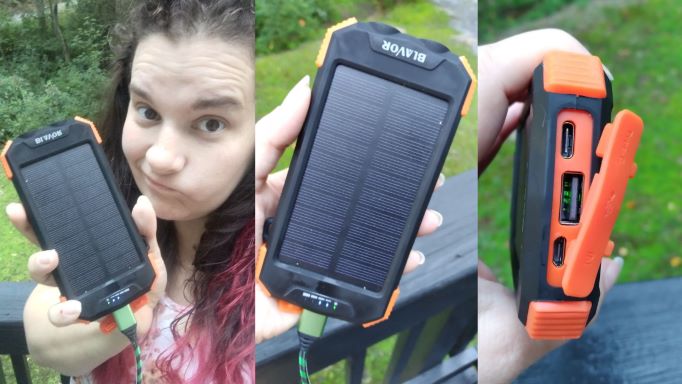Does your job have you managing a construction site and in need of a new power source for running all of your tools and appliances? You may even be renovating a home and just do not have the option of connecting up to the existing power. The thing that you need to get everything running smoothly is a portable generator.
In this article, we will go over which generators would be best for you and why to help you make an educated choice.
It goes without saying that you are going to need different generators for different jobs, due to the different workloads that each job is going to require.
Here are three distinct categories that should line up with the different needs a job might ask of you:
Contents
Smaller Backup Generators (1000w to 5,500w)
Some jobs may not require a particularly heavy workload and only need you to be powering a couple of tools at a time. This would make a generator that gives you a very high wattage a poor choice, as it would most likely run you more money and just generally be inefficient for your needs.
These generators are also very portable and so relocating your generator when you need to work on a different area will be made very easy.
Our choice in the power range would be the DuroMax XP4850EH Dual Fuel Portable Generator.
High-end Backup Generators (5000w to 10,000w)
If you need a decent amount of power for your current job, consider getting a higher-powered generator. Say you need to reliable and constant power for a variety of tools, you are going to want a generator that can keep up.
Although they are not as portable as the smaller generators are, they make up for this in a greater power output and usually come with additional features, useful both on site and for home renovations.
Our choice in this power range would be Westinghouse WGen7500DF Dual Fuel Portable Generator.
Heavy-duty Generators (2,500w to 15,000w)
This kind of generator is best suited in an environment such as a construction or work site. The least portable of generators, a heavy-duty generator will however easily provided a much higher power output and is made with the intention of being able to stand up to the rigorous testing a construction site will provide with a wide array of features that will prove important to the smooth running of your site.
From each of these categories there are many different options and, within the rest of the article, we will give you the information to find out just what exactly it is you need from your generator, in order to make the best possible choice.
Our choice in this price range would be the DuroMax XP12000EH Dual Fuel heavy-duty generator. ( It’s a beast! )




Last update on 2025-05-01 / Affiliate links / Images from Amazon Product Advertising API
What are your power needs?
A crucial step in understanding what kind of generator will be best for you is to figure out the amount of power you are going to need, after all you do not want to spend more money than you have to on a generator that provides more power than you need.
The easiest way that you can figure out your power needs are to make a list of the tools and appliances you will be using at the same time.
After making a list there are a few steps to follow in order to calculate the total power needed:
- Find the starting and running wattages for your tools and write them all down, you should be able to find this information on the tool itself and if not it is easily found either in a manual or on the manufacturers website ( you can write all of this information down into a table for easy readability if you wish)
- Now, you should add all of the running wattages together that is needed to use your tools
- Next, find the tool with the highest additional starting wattage and then add this to your previously calculated number
- This final number will be the total starting wattage your generator will need to operate
Say after adding all of the numbers together you get to a total of something like 7,000w – you will most likely need a generator in the High-end Backup category.
Some tools and appliances may not provide to watts on the product, but you can usually find it elsewhere (manuals or manufacturers website). If you still cannot find the wattage you can work it out, provided you have the volts and amps required, by using Ohm’s Law:
Watts = Volts x Amps
In the rare occurrence that none of this information is available to you, you can use a device called an appliance load tester. This will give you an accurate reading of the watts required for each device and can easily be found on Amazon.
Check out our wattage calculator for more information ↗️
What is your Average Output Capacity?
Now you have all of your tools/appliances total wattages, you will need to think about whether you are actually going to be required all of that power for the whole job or only for short periods where everything is running at once.
Should it be the case that you will only require half the power for an extended amount of time, you may want to consider getting to smaller units that can then be run in parallel that then will run as one unit.
Using this approach, you can then shut down one of the units when your power requirements lower below the halfway point.
This way of running your generators may have an increased start-up cost, however, it will provide you with greater flexibility and has the added benefit of providing insurance against generator malfunction.
If one generator was to go down, then you would still have the power from the other generator and so you could still carry one with at least a part of the job.
If you were to run a single generator with a higher power capacity and then only use half the power for extended durations of time, then you would cause issues for that generator.
When you run a generator at a power output that is lower than around 60% of its total capacity you will encounter a problem known as wet stacking. This is a loss of total power output due to carbon build-up and is something you want to try and avoid.

What space do you have available for your generator?
As you have now figured out the power requirements and output capacity, you should turn your attention to the size of the generator you are looking for. Consider whether you have the space for a larger generator or whether a smaller generator might be more appropriate.
Generally speaking, in terms of size, there are 2 stand-out types of generator that are most suitable for contractors or people doing construction-type work:
Portable Generators
These smaller form factor and relatively compact generators usually provide you with a medium level of power output (generally around 6,000w to 28,000w). Due to their smaller size, they can be moved around and stored away with relative ease.
The aforementioned traits of this type of generator make it well suited to smaller or medium sized jobs and can always be run in parallel to increase your power output for slightly larger jobs.
Mobile Generators
As the name might suggest, Mobile Generators can be moved around although they are far larger and by association heavier. The upside to this increase in mass is also an increase in the total power output of these generators (generally around 8,000w to 200,000w). For ease of use, these types of generators are usually mounted on a trailer of some kind.
Due to these traits, this type of generator is usually best suited to applications that are either outside or in easily accessible places and have the benefit of being weatherproof, durable and somewhat portable – they are, however, more expensive and take up a lot of room.
Now it is up to you which of these kinds of generators are more suitable for whatever job you are working on.
Features and Traits to look for in generators.
Knowing which features will serve you well in a generator is a useful kernel of knowledge and can influence your choice of generator in a very positive way. Here is a list of potentially important features and traits that can make your choice of generator work all the better for you:
- Type of Fuel – If you are a contractor for a job site or manager of a construction site, a good choice in fuel would be diesel. This is due to the fact that this type of fuel is probably already hanging around somewhere on the site and will make it far easier to make an inventory and manage your fuel acquisition and consumption.
- Longer Running Times – When on a job, the last thing you want, for efficiency in the workplace, is downtime. When you have to refuel your generators downtime will occur. So, one way to alleviate some of this downtime would be to find a generator with a longer running time and so you could maybe even do the refueling after the work has finished for the day.
- Bigger Gas Tanks – Slightly related to the last point, a larger gas tank will let you go longer before refueling. However, this will result in a heavier and less portable generator.
- Durable Gas Tank – You should also take into consideration the material that the tank is made from. A fuel tank that is made of metal will generally be more durable and last longer. Plastic fuel tanks may be cheaper, but they run the risk of damage much more often than a metal one would and can also become brittle in very cold conditions.
- Fuel Gauge – Having a fuel gauge is an almost essential feature for a generator and will make your job so much easier. If you were to run a generator without one it would cause unnecessary problems in fuel management.
- Automatic Idle Control – This feature can sometimes be under other names, such as Smart Throttle or Eco-Throttle. It can reduce both the total fuel usage and the noise of your generator. It does this by adapting the RPM of your generator to the amount of load. So, if your generator is to idle then this feature can lower the RPM to match.
- Automatic Fuel Priming – Although nobody plans to let their generator run dry, sometimes this will unfortunately happen. If your generator has this feature though, there will be no need to wait around for technicians and repairmen to come and fix your generator and instead all you need is to refill and turn the ignition for your generator to be up and running again.
- Fuel Shutoff Valve – A shutoff valve will be very useful during any time when you have to take the generator out of use. If you are, transporting, storing, or maintaining your generator, you will need to make sure all fuel is removed from the system.
- Automatic Oil Shutoff – This feature will cause a shutoff when your generator is low oil and prevent any damage that running a generator with low or no oil may cause. This feature is important for safety as a failing generator can be dangerous for any workers around.
- Button Start-up with Manual Recoil Backup – Using a standard recoil backup can prove difficult for people who have not had to do it before. If your generator were to have an electronic button and then a backup manual recoil starter.
- Maintenance-free Electric Battery and a Trickle Charger – In the scenario in which you decide to go for an electric battery, you should also check to see if the battery is maintenance-free and/or uses a trickle charger so you don’t run into any start-up issues.
- Automatic Voltage Regulation or Inbuilt Inverter – Assuring there are no huge fluctuations in the current is very important in making sure that no damage is done to any tools connected to the generator. To make sure you have a constant current you should get a generator with either an Automatic Voltage Regulations system or an Inbuilt Inverter.
- Inbuilt Wattage Meter – An inbuilt wattage meter would show you how much power is being used by your tools and appliances from your generator. This will give you a quick and easy reading so that you can tell whether you can plug an additional tool in without exceeding the total power capacity.
- Frequency Switch – Different tools may run on different frequencies (Hz), and so you will need a generator that can switch between them. A frequency switch will allow you to easily alternate between the different frequencies and so provide greater efficiency.
- Voltage Switch – Similar to the frequency switch, a voltage switch will offer you the option of changing between different voltages for a more efficient experience.
- GFCI Outlets – GFCI stands for ground fault circuit interrupter and outlets that have this gain an additional ground wire. This ground wire will trip the circuit when an imbalance in the power flow occurs are shut off the generator. OSHA and NEC regulations require these outlets anywhere with near a water source, so it is worth bearing in mind.
- Covered Outlets – If you anticipate your site to be dusty or in an environment with small bits of debris, you should consider covered outlets. This will prevent any blockages that can prevent you from being able to plug in appliances and keep things running smoothly with no additional downtime.
- Durable Frame – Due to the challenging nature of most sites, it is worth paying up for a generator that has a frame strong enough to withstand the harsh environment. Metal shielding and/or a roll cage are both excellent features to sturdy up your generator.
- EPA Tier IV Certification – If you decide to use a diesel generator, it is worth looking for one that has a Tier IV certification from the EPA (Environmental Protection Agency). This is the highest grade in terms of producing a low amount of emissions.
- Noise Level – You may find in some locations that your site has to adhere to a strict noise limit. In this scenario, it would be useful to find a generator that is either built to be low on noise or that has a muffler.
- Spark Arrestor – Some locations will have restrictions on generators without spark arrestors as they help prevent fires in dry vegetation and so it is worth considering.
- Wheel Kit and Lifting Hook/Eyes – It is most definitely worth getting a generator that comes with its own wheel kit. This will make it far easier to transport your generator around your site. Whilst you may think that 4 wheels would be best, you will have trouble moving your generator on anything but a flat surface. 2 wheels would allow you greater flexibility, provided these wheels are sturdy and semisolid with a bit of bounce. If you are to move your generator with either a boom crane or a forklift, you should make sure it comes with a lifting hook/eyes.
You most likely will not be able to find a generator that can boast having every one of these features, but you will find some with quite a few. Be aware that generally, the more of these features a generator has the higher the price tag, although you may find that some of these features are vital to the kind of work environment you aim to set up.
What should I consider before getting a generator?
It may come back to haunt you if you rush too quickly into buying a generator without considering if it is really right for the job. Consider the following before you commit to your purchasing of a generator.
Generator Maintenance
To avoid unforeseen downtime, and therefore a loss of money and efficiency, you should make sure you have a plan for the regular maintenance of your generator. You should sure that any maintenance is carried out by an expert and for some generators the manufacturers may even have their own inhouse maintenance teams.
Storage Requirements
You should also consider where it is you are going to store your generator. If you were to buy a generator and then not have the ability to store because it was too large or didn’t allow you to move it around easily, then you would open yourself up to weather damage and theft.
Another thing to keep in mind is that if you are planning on leaving your generator stored for a long time you should make sure to drain the gas tank so that gum deposits do not form and cause clogs in your carburettor. A manual fuel shutoff valve will assist you in the drainage of your gas tank.
Local Laws and Regulations
One of the most important things to consider is that the rules for you may be different to what you might expect. It would be worth either asking someone in the know locally or simply search the internet for the information relevant to your area.
Now that we’ve been through some handy features and things to consider before you buy your generator, we will now provide you with a short list of curated generators we think will be most suitable for the majority of people reading:
EDITORS CHOICE
- 7500 Rated Watts and 9500 Peak Watts (Gasoline); 6750 Rated Watts and 8550 Peak Watts (Propane); 6.6 Gallon...
- Intuitive Control Panel Features Two GFCI 5–20R 120V Household Duplex Outlets and One L14-30R 120/240V 30A...
- Plug-and-Play: Comes With a Remote Start Key Fob, 12V Battery Charger, Oil, an Oil Funnel, a Tool Kit, and a...
- Powered by a 420cc Westinghouse 4-Stroke OHV Engine Featuring a Long-Lasting Cast Iron Sleeve With Automatic...
- All Westinghouse Portable Generators are Functionally Tested in the Factory and May Contain Minimum Residual...
Last update on 2025-04-30 / Affiliate links / Images from Amazon Product Advertising API
The Wgen7500w from Westinghouse is a fantastic generator with a host of great features. Rated at 7500 running watts and 9500 peak watts, this generator will keep a wide variety of tools all powered up at once. It boasts a 6.6-gallon gas tank and can run for 16 hours at 25% load which gives you plenty of uptime before having to refuel, along with an easy to access gas shutoff.
OSHA and CARB compliant along with GCFI plugs sockets, this industrial grade generator can provide plenty of power even with high surge loads. Electric and remote starts allow for an easy start up even in the situation that an electrical start is not possible.
The unboxing and assembly of this product is a breeze thanks to the clear and intuitive instructions and excellent customer service. This customer service extends to a quick and careful delivery that will have your generator arrive in peak condition.
BUDGET OPTION
- Plenty of Power – With 4,850 starting watts and 3,850 running watts, this unit can handle heavy loads, from...
- Dual Fuel Technology – This generator runs on gasoline or propane, giving you the freedom and flexibility of...
- Powerful Engine – The DuroMax 210cc OHV engine is a workhorse that provides plenty of power to handle...
- MX2 Technology - Get the maximum power from each of the 120-volt receptacles. Choose between operating the...
- Fully Featured Power Panel – The power panel includes a wide selection of outlets for maximum compatibility...
Last update on 2025-05-01 / Affiliate links / Images from Amazon Product Advertising API
If you require a generator on the cheaper side, the DuroMax XP4400E may just be the one for you. This generator has a sizeable 3.9-gallon gas tank to keep you fuelled up and is rated at 3500 running watts and 4400 peak watts.
This reliable generator is perfect for RV’s and is relatively low maintenance, although you should not leave it for too long without starting it. The start-up on this product is easy and stress-free which is always a great feature to have on a generator.
GCFI sockets and surge arrest technology keep this generator operating safely and allow for it to shutoff in case of a surge in power.
Some have reported issues during shipping with the product arriving damaged although this is rare, and the product require regular oil changes along with a rather loud noise level. Considering the price point however, we would say this generator delivers a solid service for the money.
AMAZON BESTSELLER
- Dual Fuel – Operate your 7500-watt portable generator right out of the box on either gasoline or propane,...
- Electric start – Power up the 439cc Champion engine with the handy toggle switch, battery included
- Intelligauge – Keep track of voltage, hertz and run-time hours to easily monitor power output and track...
- Powerful – At 9375 starting watts and 7500 running watts on gasoline and 8400 starting watts and 6750...
- Champion Support – Includes 3-year limited warranty with FREE lifetime technical support from dedicated...
Last update on 2025-04-22 / Affiliate links / Images from Amazon Product Advertising API
The Champion 8000-Watt Dual Fuel Generator is an Amazon bestseller for good reason. This powerful and reliable generator has a whole host of features that make it stand out from the crowd.
Rated at 8000w this generator has a huge amount of power, touch start, low-oil shutoff, GCFI, safety fuel selector switch and the Dual Fuel option gives you the room to power your generator with gasoline or propane with its 6.1-gallon tank.
Easy setup is guaranteed and a vast amount of information on maintenance and upkeep is provided by the manufacturer along with clear instructions for regular operation. Air cooling and a cast iron sleeve also help secure this products place at the top of Amazon’s sales charts.
Final Thoughts
In summary, the type of generator you need will depends greatly on the kinds of jobs you are to be carrying out either on site or in your home. Hopefully this article will have informed you enough to able find the perfect generator for you and allow you to power on through the task at hand.








